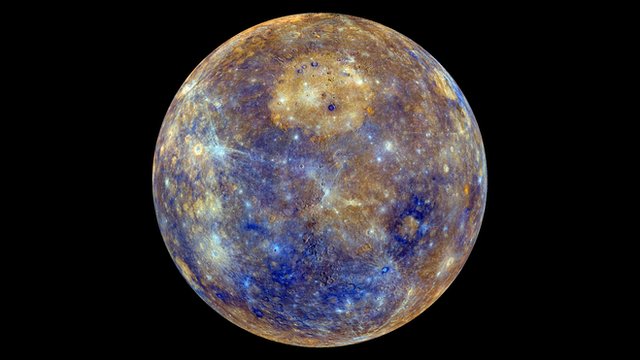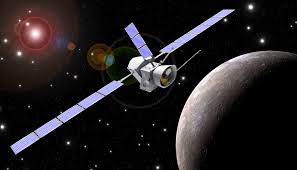Mercury Magnetosphere
Mercury has a relatively strong magnetosphere, with 1% of the magnetic field strength generated by Earth. It is possible that this magnetic field is generated in a manner similar to Earth’s, by a dynamo of circulating liquid core material, though scientists are unsure whether Mercury’s core could still be liquid, although it could perhaps be kept liquid by tidal effects during periods of high orbital eccentricity.

Mercury has a higher iron content than any other solar system object. Several theories have been proposed to explain Mercury’s high metallicity. One theory is that Mercury originally had a metal-silicate ratio similar to common chondrite meteors and a mass approximately 2.25 times its current mass, but that early in the solar system’s history Mercury was struck by a planetesimal of approximately 1/6 that mass. The impact would have stripped away much of the original crust and mantle, leaving the core behind. A similar theory has been proposed to explain the formation of Earth’s Moon; see giant impact theory.
A third theory suggests that the solar nebula caused drag on the particles from which Mercury was accreting, which meant that lighter particles were lost from the accreting material. Each of these theories predicts a different surface composition, and so one of the aims of the forthcoming MESSENGER mission to the planet is to take observations that will allow the theories to be tested.
Physical Characteristics of Mercury :
Mercury Temperature
Mercury has a mean surface temperature of 452 K, but it ranges from 90-700 K; The sunlight on Mercury’s surface is 6.5 times as strong as it is on Earth, with the solar constant having a value of 9.13 kW/m².
Terrain

For a period of about 800 million years Mercury, was heavily bombarded by comets and asteroids. At this period of powerful crater formation, the surface established impacts above its intact surface, facilitated by the lack of any atmosphere to slow impactors down. At this time, the planet was volcanically active, and basins such as the Caloris Basin were filled by magma from within the planet, which produced smooth plains similar to the maria found on the moon. Apart from craters of diameters in the range of hundreds of meters to hundreds of kilometers, there are others of massive proportions such as Caloris, the largest structure on the surface of Mercury with a diameter of 1,300 km. The impact was so powerful that it caused lava eruptions on the crust of the planet and left a concentric ring surrounding the impact crater over 2 km high. The consequences of Caloris are also remarkable: it is broadly acknowledged as the cause for the fractures and leaks on the opposite side of the planet.
Mercury Orbit
Mercury orbit has high eccentricity, with the planet’s distance from the Sun. Among the major planets only Pluto has a more eccentric orbit. However, because of the smallness of Mercury’s orbit, all of the planets except the Earth and Venus have a larger spread between perihelion and aphelion (Mars’ is 42.6 Gm to Mercury’s 23.8 Gm, for example); there are even several outer planet satellites that beat Mercury’s spread: Saturn’s S/2004 S 18 (with 30.8 Gm) and Neptune’s S/2003 N 1 and S/2002 N 4 (42.0 and 47.9 Gm, respectively).
A study indicates that the eccentricity of Mercury’s orbit varies frantically from 0 (circular) to a very high 0.47 over millions of years. This is thought to explain Mercury‘s 3:2 spin-orbit resonance (rather than the more usual 1:1), because this state is more likely to happen through a period of high eccentricity.
Solar System | Mercury | Venus Moons | Earth | Mars Moons | Jupiter Moons | Saturn Moons | Uranus Moons | Neptune Moons | International Space System | ISS Research | Moons of the planet | Magnetosphere | Regions Of Comets | Space Station Glossary | Space Station Abbreviation | Space Station Sitemap | Asteriods | Contact Us